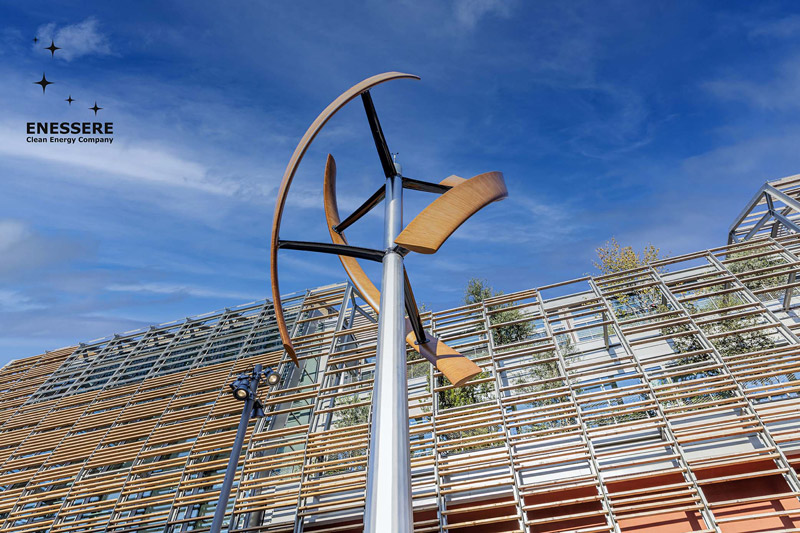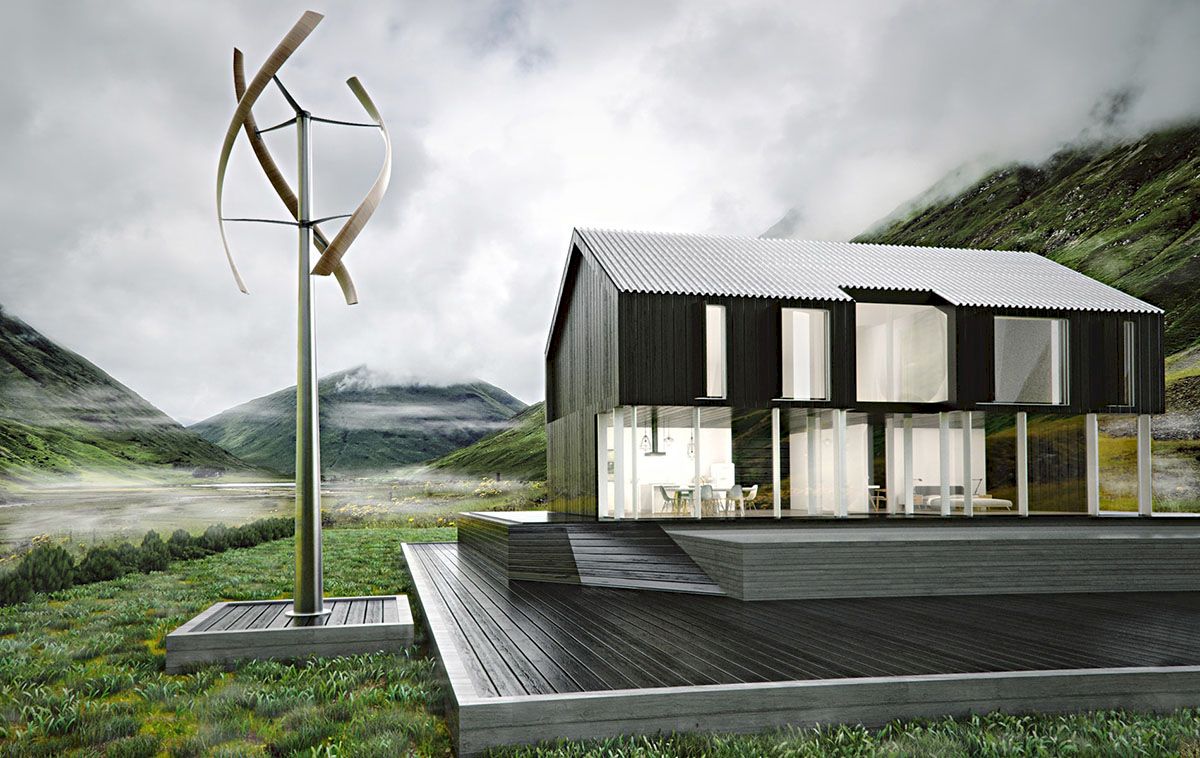Sustainable buildings for a zero-impact future.
Environmental sustainability and energy efficiency: these are the real estate market trends for the long-term, since the impact of mankind on the planet’s climate and on the consumption of resources is becoming increasingly heavy over the years. Therefore, more and more we talk about sustainable architecture and green building, today more than ever in combination with renewable energy production systems to make buildings autonomous from the point of view of energy needs.
So designers and architects tend more and more to design new solutions that move towards sustainability: it is now a market trend that has long been wished for.
New buildings and renovations seek new technological solutions, ready on the market with the awareness of the challenge to be overcome: finding a new balance with the environment that hosts us. This harmony has always been sought by the Enessere team in the design of our domestic wind turbines. In fact, they integrate perfectly into the surrounding environment while enhancing the architectural context towards an image of sustainability.

What does sustainable architecture mean?
The first time the term “sustainable building” was used was in 1970, more than fifty years ago, just think! In fact, it was used in the book “The limits to growth” then translated into Italian in “Limiti dello sviluppo“, where for the first time the question of protecting the environment and reducing CO2 emissions into the atmosphere was raised.
Then, in 1991, sustainability was defined by UNEP, WWF and WCU as:
“an improvement in the quality of life, without exceeding the carrying capacity of the supporting ecosystems, on which it depends”
UNEP, WWF e WCU
What is sustainable architecture based on?
Among the fundamental points of green building and eco-sustainable architecture we can highlight the following points:
- The urban context:
Each building must be designed thinking of the context in which it is to be inserted, because it is no longer possible to think of building a skyscraper in a residential neighbourhood to maximise the surface area according to the accommodation capacity without verifying the visual impact on the skyline and the effect on the pre-existing buildings, perhaps creating a shadow that could affect the energy efficiency of photovoltaic panels of other buildings. - The orientation and position of the interiors:
We are increasingly trying to build by orienting buildings with the east-west axis in order to have greater exposure to light for the larger walls. Furthermore, the interiors are often arranged with a criterion that sees those most used during the day oriented towards the south, so as to make more use of the sunlight. - The materials used:
The commitment is not to pollute the environment and to use substances that could put at risk in the long term those who will have to live or work in those places. Natural and recyclable materials are preferred, even better if recycled. Then, if they also come from neighbouring areas so much the better. - Energy efficiency:
Summer heat protection systems such as sun blinds can improve and optimise energy consumption with little expense, which can be further improved by exploiting renewable energies such as our vertical micro wind turbine also suitable for domestic use for the production of electricity.
Green building: materials are important
What is green building?
It is a set of techniques used to construct a building respecting the canons of environmental sustainability. Hence, the rediscovery of the use of materials that apparently now seem new and innovative but that in reality man has always exploited, such as wood, cork, cellulose etc., comes to the aid of the construction industry as it has always been understood in the last 30 years.
In fact, taking advantage of these materials allows to optimise the thermal insulation of buildings in combination with new quality double or triple glazing windows that once did not exist: green building is not simply using natural materials but rediscovering techniques and knowledge that have become less used over time, such as the attention placed on the orientation of buildings in order to intelligently exploit the exposure to light, so as to lower energy consumption in terms of lighting or heating.
Natural materials are also important for another reason: every building has a life cycle that requires regular maintenance and sometimes, renovations and demolitions of works that generate waste materials. Therefore, if these scraps are made of natural materials, they have a higher probability of being reused or in any case, if they become waste, they are more easily disposed of in an environmentally sustainable way, greatly reducing the environmental impact.
Here are some examples of eco-sustainable materials:
- Wood.
It is one of the main natural products, it guarantees excellent thermal insulation and if used intelligently it has a very low environmental impact. Among other things, we remind you that our Hercules Wind Turbines are clad in Paulownia wood. - Cork.
One of the best thermal insulators in nature, durable, practical and with very low impact. - Bio-bricks.
They are obtained with the wood part of hemp and a lime mixture, have a low cost and excellent thermo-acoustic comfort. Furthermore, with bio-bricks it is possible to maintain an average temperature of 26 degrees at home, an excellent remedy for the use of air conditioners.
An example of sustainable architecture
The Green Towers: Garibaldi Towers in Milan.
In Milan, two 23-storey high eco-sustainable towers were built in the Garibaldi Area Business Center. What makes this project fascinating and sustainable are some choices such as bioclimatic greenhouses that accumulate heat in the winter to heat the rooms and help ventilation in the summer, or the collection of rainwater which is suitably filtered and used to fill the toilet water tanks.
Among the energy solutions we find solar collectors that are able to produce 50% of domestic hot water, photovoltaic panels and wind turbines on the roof.
And if we want to look at what is happening in the world, praise must also be given to those who try to make a building that was built many years ago as sustainable as possible, in a way that we could define as traditional.
An example of this is the very famous Empire State Building, the New York skyscraper seen in many films made in the USA (King Kong above all), where the property owner has signed an agreement with an energy company to make the skyscraper powered 100% by renewable wind energy.



